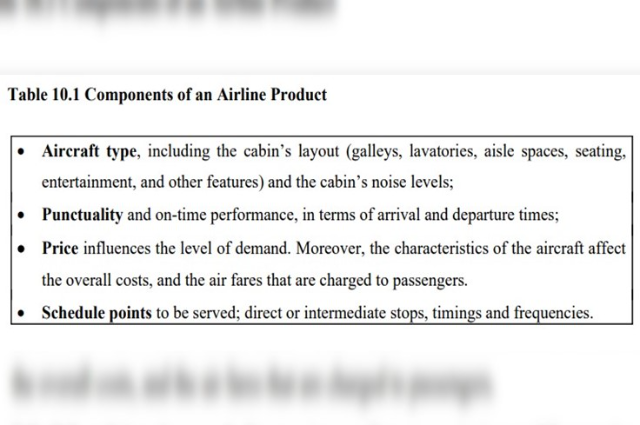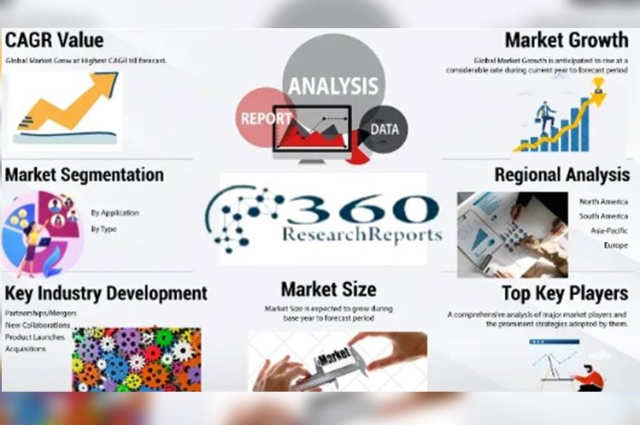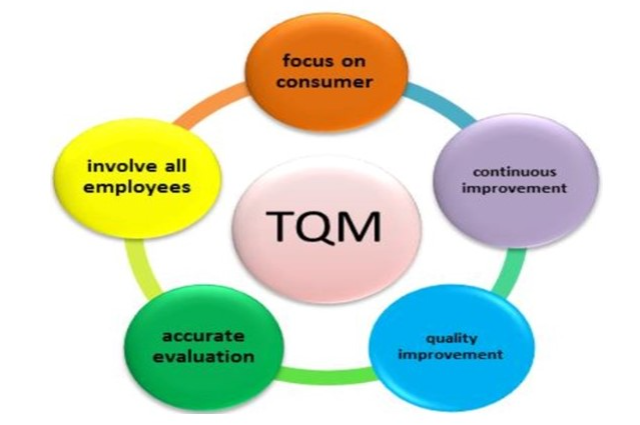
Abstract: The airline industry comprises both tangible and intangible components within its product offering. It's crucial to recognize that passengers aren't just purchasing a flight; they're also investing in the overall experience associated with the airline. Therefore, continual product development and market research are essential for airlines to stay abreast of evolving market trends. Marketers within the airline industry must understand what defines excellent customer service, particularly for high-value customers. However, it's important to acknowledge that various customer segments exist, each with unique expectations and preferences. These may vary depending on factors such as travel distance, purpose (leisure or business), and personal priorities. In summary, this chapter proposes that customer-centric airlines adopt a total quality management approach, wherein every operational process is consistently enhanced to enhance customer satisfaction. Such an approach necessitates collective responsibility among all staff members to improve the airline's service quality.
Introduction
In today's aviation landscape, commercial airlines operate sophisticated jet fleets, connecting numerous countries and offering diverse services between major cities. These services encompass a wide spectrum of offerings, ranging from full-service carriers with multiple classes of service to low-cost carriers, inclusive tour packages, connecting flights, stopovers, fly/drive and fly/cruise options, incentive packages, charters, and more. Within these offerings lie both tangible and intangible elements. Tangible components may include amenities like comfortable boarding lounges, while the intangible aspect often revolves around the quality of customer service delivered by attentive cabin crew.
This chapter delves into various facets of airline products, acknowledging the differing needs and preferences of short-haul, long-haul, leisure, and business travelers. A customer-centric approach demands anticipating and surpassing these varied expectations. Achieving this goal may entail embracing a total quality mindset within airlines, continuously refining service quality to enhance the overall customer experience.
Dimensions of the Airline product
As previously emphasized, understanding the diverse needs and wants of airline customers is paramount. Different customer segments exhibit distinct preferences, such as business passengers prioritizing punctuality (Peterson et al., 2013) while leisure travelers typically seek affordability (Tribe, 2015). Historically, leisure passengers have placed greater emphasis on price compared to business travelers, although this dynamic is evolving. Previously, business travelers displayed relatively inelastic demand, willing to pay premium prices for seats (Swarbrooke & Horner, 2001). However, increased competition, particularly from low-cost carriers, has shifted this demand landscape (Porter, 1986).
Airline products encompass both tangible and intangible aspects. Tangible features of business class services may include separate check-in counters, exclusive lounges, priority boarding, superior inflight meals, and entertainment options. Meanwhile, intangible attributes encompass interactions with friendly check-in staff and courteous cabin crew. Differentiating between customer needs and wants can be challenging, particularly within the competitive airline industry. With numerous carriers operating similar routes, airlines must meet fundamental transportation needs while ensuring safety and security. In such a landscape, those capable of satisfying customer desires gain a competitive edge.
For instance, many airlines now offer off-airport luggage check-in services, such as at hotels or train stations, to accommodate passengers' diverse travel needs. This convenience is particularly beneficial for those utilizing public transit or seeking to avoid leaving luggage unattended before departure. Examples include bag check services at Disney Resort for guests traveling up to 24 hours before their flights, or check-in options at central stations in Kuala Lumpur for Malaysian or Cathay Pacific passengers. Similarly, passengers departing from Hong Kong and Paris-Charles de Gaulle airports can drop off baggage the day before departure, enhancing the travel experience across all classes and destinations.
Short-haul passengers
Short-haul passengers have distinct needs centered around conveniently timed and frequent flights, given that their journeys typically span a single day. Day-return itineraries are particularly common among business passengers conducting same-day business activities. However, timing preferences may vary across different markets, with early morning outbound and late evening return flights often preferred and demanded, especially on weekdays.
These passengers may opt for point-to-point flights directly from origin to destination, or they might use short-haul routes to connect with longer-distance flights. In the latter case, it's essential for the timing and frequency of short-haul flights to accommodate passengers making onward connections.
It's important to differentiate between passengers traveling point-to-point and those using short-haul connections for longer journeys. For point-to-point travelers, factors like seat size may be less critical compared to those making connections, as the latter may compare the seating on short-haul flights with that on longer-haul routes, where larger seats are typically available.
The Long-haul Passengers
Long-haul passengers often prioritize certain amenities and services differently than their short-haul counterparts. Key elements of the airline product for long-haul journeys include:

Image Credit: TheAirlinebusinessChapter10TravelMarketing BY Mark Anthony Camilleri
- 1. Schedule and Route Network: Departure and arrival times, along with route options, hold significant importance for carriers operating long-haul flights. Factors such as flight duration and time zone changes en-route influence the attractiveness of departure and arrival schedules. Customers may prefer non-stop flights and quick arrival times, prompting airlines to optimize scheduling. Advances in aircraft technology, such as the Boeing 777-200, 787-200, and Airbus 350/900, enable carriers to enhance scheduling flexibility. Additionally, the choice of gateway airport plays a role, though many international airports now offer high standards worldwide.
- On-Board Service: Long-haul passengers spend extended periods onboard, making onboard service a crucial consideration. Airlines are increasingly offering amenities like high-speed in-flight Wi-Fi, allowing passengers to browse the web, send emails, and stream content for a fee. On-board service encompasses seating comfort, catering options, inflight entertainment, and most importantly, the standard of customer service provided by cabin crew. These elements collectively shape the passenger experience and perception of the airline product.
- Cost Considerations: The frequency of service and the accessibility of seats are closely linked to the cost of providing these features. As airlines strive to meet the demands of long-haul passengers, they must balance service quality with operational costs to remain competitive. Many long-haul carriers are aligning their offerings to cater to corporate business passengers, reflecting a trend towards standardized products across the industry.
In summary, long-haul passengers prioritize schedule convenience, onboard service quality, and cost-effectiveness when selecting airlines for their journeys. Meeting these evolving preferences requires airlines to continually innovate and adapt their offerings to remain competitive in the global market.
Business travel market

Image credit : https://alliedmarketresearch.com/]
In the business travel market, many features of airline products cater to passenger desires rather than fundamental needs, yet they serve as desirable attributes that enhance the overall travel experience. For instance, amenities like separate check-in desks provide speed and status differentiation, while special baggage facilities for business passengers offer perks such as priority baggage handling, larger allowances, and exclusive luggage tags, alongside priority delivery at the destination baggage hall. Additionally, airlines often provide dedicated lounges with business facilities for corporate travelers, along with separate cabin areas onboard featuring comfortable seating, extra legroom, and enhanced meal and entertainment options.
Business passengers often prioritize last-minute seat access, flexibility in flight arrangements, and frequent air services. Seat access refers to the probability of securing a booking when needed, while flexibility allows for changes to flight plans if necessary.
Airlines must ensure frequent flights with sufficient capacity to meet these demands.
While pricing remains an important consideration for all travelers, changes in the market have affected the traditionally inelastic business segment. The emergence of low-cost carriers with extensive route networks and frequent schedules has introduced more competitive pricing dynamics. Additionally, there has been a notable increase in independent business travelers, such as self-employed individuals or small business owners, who bear the cost of airfare themselves. Unlike corporate travelers whose fares are typically covered by their employers, these independent travelers prioritize fare affordability.
In the corporate market, centralized purchasing by large businesses has led to negotiations with airlines for fare discounts and concessions, particularly for frequent travelers. Airlines may offer discounts to companies based on their expenditure levels, increasing competition among carriers. Previously, when airlines maintained identical pricing, companies had limited leverage to negotiate discounts for their business travelers. Today, airlines are more likely to offer discounts to specific companies meeting certain expenditure thresholds.
Frequent flyer programs
Frequent flyer programs serve as loyalty schemes designed to reward and incentivize frequent purchasing behaviors among air travelers. These programs have proven to be highly influential in passengers' choice of full-service airlines, as they offer rewards based on accumulated air miles through points and fringe benefits. Passengers can redeem these points for free flights or upgrades, aligning with their needs and desires.
Beyond serving as incentive schemes, frequent flyer programs play a crucial role in customer relationship management (CRM) by retaining valuable customer information.
CRM systems allow airlines to access data on customers' travel patterns and behaviors, enabling personalized customer service to enhance retention and loyalty.
Traditionally, frequent flyer programs focused solely on rewarding air travel. However, contemporary programs now extend to collaborations with other industries such as retail, finance, and hospitality. For example, using a specific credit card may earn customers additional air miles. Many of these partnerships involve financial agreements between businesses and airlines.
However, the evolution of frequent flyer programs into profit centers may shift the focus from customer satisfaction to revenue optimization. While these programs provide incentives, they do not always guarantee sufficient motivation for passengers to choose a particular airline. Additionally, customer data may be dispersed across multiple partners, limiting its utility in data mining and business intelligence activities.
While investing in and maintaining a robust frequent flyer program is essential, it is also crucial to explore alternative strategies for effectively managing customer relationships. This could involve developing innovative improvements or alternative approaches to address evolving customer needs and preferences.
The Leisure Travel Market

Image Credit : https://linkedin.com
In contrast to the relatively inelastic nature of the business travel market, the leisure travel market exhibits high elasticity, with demand heavily influenced by price considerations. Price plays a pivotal role for leisure travelers when selecting an airline, as they typically bear the cost of their fares rather than being sponsored by employers. Additionally, leisure travelers often journey in groups, multiplying individual airfare costs, which constitute only one part of the total holiday expenses. Consequently, lower airfare prices afford them greater spending flexibility on other travel products and experiences.
Leisure travel is characterized by its discretionary nature, with holiday expenses not always being prioritized by individuals. Seasonality also plays a significant role, with certain destinations experiencing heightened demand during specific months. Unlike business travelers, leisure passengers may prioritize safety and security over schedule considerations, though they still expect a certain level of service and courtesy from cabin crew.
While leisure passengers may be infrequent flyers, they remain price-sensitive and would travel more frequently if fares were affordable. Nonetheless, they may still anticipate a level of good service, with an increasing number opting to pay extra for business class travel. Some discerning customers may be attracted to airlines offering differentiated service onboard, enticing them to choose carriers perceived to offer a higher level of service quality.
Customer Service

Image by https://revechat.com/
Customer service plays a pivotal role in securing the loyalty of frequent travelers, particularly in a fiercely competitive market where differentiation is key. Understanding and delivering on customer service expectations can provide airlines with a crucial advantage over competitors.
At the point of sale, customers interact directly with airlines through various channels, including sales offices, telephone reservations (call centers), or corporate websites. This initial contact represents a critical "moment of truth" where airlines must strive to not only meet but exceed customer expectations to retain their patronage. Failure to do so may prompt customers to switch to rival airlines.
Key aspects of customer service expected from frontline staff include:
- Prompt Attention: Customers should be attended to promptly, with airlines establishing standards for acceptable waiting times in sales offices or telephone queues. Efforts should be made to measure customers' perception of promptness in terms of minutes or seconds.
- Courtesy: Defining customer service can be subjective and culturally dependent, but airlines must uphold certain minimum standards and procedures for courtesy. This entails training staff on appropriate verbal and non-verbal communication cues to ensure consistent high standards of service. However, challenges may arise when airlines utilize intermediaries such as call centers, which may not always deliver the same level of service.
By prioritizing prompt attention and courtesy at the point of sale, airlines can enhance the overall customer experience and foster long-term loyalty among travelers.
In today's digital landscape, online engagement with customers has become paramount for airlines. The internet serves as a hub for content, conversations, and connections, making it essential for airlines to maintain a strong online presence. Customers frequently rely on online reviews and ratings when making travel decisions, emphasizing the importance of airlines presenting compelling online content through their corporate websites and engaging with users on social media platforms.
Airlines can leverage social media networks to share valuable content and interact with prospective customers. Quick responses on social media are crucial as online users expect instant feedback. Prompt engagement demonstrates the airline's commitment to customer care and fosters positive relationships with potential passengers.
Key considerations for online engagement with customers include:
- Attention to Special Requirements: Customers with special needs, such as disabled passengers or those requiring specific onboard accommodations, should receive exemplary customer service. Airlines must prioritize meeting these requirements to ensure a positive travel experience for all passengers.
- Provision of Additional Information: Customers may seek additional information on various aspects of their travel, such as hotels, weather, travel formalities, and currency. Airlines should cater to these requests by providing comprehensive information through their corporate websites.
- Customer Service at the Airport:While some aspects of passenger services at airports fall under the airlines' purview, many are managed by airport authorities or government agencies. Customers may perceive these services as part of the overall airline experience, highlighting the importance of seamless coordination between airlines and airport authorities to enhance the passenger experience.
While airlines can directly control the standards of customer service provided by their own staff, they have limited influence over intermediaries' staff and airport authorities. However, airlines can collaborate with airports and ground handling service providers to improve facilities and services for passengers. Dedicated airline staff stationed at key points, such as baggage retrieval areas, can provide valuable assistance to passengers and serve as a source of consumer feedback for the airline. This proactive engagement helps strengthen the airline's relationship with passengers and enhances overall customer satisfaction.
Inflight services are a key focus of airline advertising and marketing campaigns, as they represent the core feature of the overall airline product that customers associate with the brand. Therefore, it is essential for airlines to ensure that their inflight services are efficient and of high quality. Unlike other areas of customer service, inflight services are solely the responsibility of airlines, and once the aircraft has taken off, they are under the direct control of the airline.
Key areas of focus for inflight services include:
- Seating: Providing comfortable and ergonomic seating arrangements for passengers.
- Lavatories: Maintaining clean and well-equipped lavatories for passenger use.
- Catering: Offering a variety of meal options and ensuring quality in-flight dining experiences.
- Entertainment: Providing entertainment options such as movies, music, and games to enhance the passenger experience.
- Cabin Crew: Ensuring that cabin crew members embody a customer-centric ethos and provide attentive service throughout the flight.
- Additional Services: Offering amenities such as entertainment packs for children, access to wifi facilities, and clear information on onward flights.
Inflight service is particularly crucial for corporate business passengers, especially during long-haul flights, where comfort and amenities play a significant role in passenger satisfaction.
Post-flight services encompass many aspects of customer service provided at the airport, such as baggage handling and passenger movement. Additionally, airlines may offer transportation services from the airport to hotels or other terminals via special coaches or limousines. Handling lost or mishandled baggage promptly and competently is also an essential component of post-flight services. Furthermore, airlines may provide prompt refunds for unused tickets upon passenger request and handle complaints and compliments with care and efficiency. Maintaining strict standards of customer service procedures is vital in addressing these issues and ensuring passenger satisfaction even after the flight has concluded.
The Total Quality Concept

Image Credit: www.semanticscholar.org
Many airlines are shifting towards a holistic approach to quality service known as the "total quality concept." Rather than treating individual elements of their product separately, they aim to enhance overall service quality by fostering a greater awareness of this concept among all staff members. Traditionally, customer service training focused mainly on front-line employees, but the total quality policy extends to every employee, recognizing that each operational process impacts customers and the airline product as a whole. Thus, ensuring customer satisfaction becomes the responsibility of every individual within the organization.
In a total quality environment, all staff members, regardless of their position, are involved in decision-making processes concerning the airline product. They are expected to actively contribute to improving product and service quality for the benefit of customers. Participative leadership may be necessary to empower employees to make decisions that enhance customer service, such as making arrangements with other airlines in the event of overbooking or providing lunch vouchers to passengers in case of flight delays. Ground staff, for example, should be proactive in handling such situations, thereby anticipating and addressing customers' needs without causing further inconvenience.
Airlines that fail to implement the total quality concept risk falling behind competitors, particularly full-service carriers that differentiate themselves based on service quality. In an increasingly competitive market, the service aspect of the airline product becomes paramount. The most successful airlines in the future will be those that offer a total quality, customer-centric product, recognizing the importance of every employee's contribution to ensuring customer satisfaction and loyalty.
Conclusion
Customers' needs and wants are paramount in the airline industry, particularly in a highly competitive environment where differentiation is key. While needs are essential, wants often take precedence, especially when airlines offer similar fares and service levels on certain routes.
Short-haul passengers typically prioritize conveniently-timed, high-frequency flights, with a distinction between those traveling point-to-point and those connecting to long-distance flights. Long-haul passengers have distinct needs and wants, with frequency, timing, punctuality, flexibility, and safety ranking high on their list.
Business passengers prioritize frequency, convenience, punctuality, flexibility, and safety, while also desiring amenities such as separate check-in facilities and special baggage services. Price is relatively less important for business travelers compared to leisure passengers, for whom it remains a significant factor in airline selection.
Frequent flyer programs play a crucial role in incentivizing and retaining loyal passengers, influencing their choice of airline.
Customer service encompasses various aspects, including service at the point of sale, digital engagement with customers, service at airports (both departure and destination), inflight service, and post-flight service. Many airlines are adopting a customer-centric approach by embracing the total quality concept, recognizing that every employee and operational process can impact customer satisfaction and the overall product. This philosophy underscores the notion that customer satisfaction is everyone's responsibility within the organization.
. . .
References:
- Peterson, M., Gillen, D., & Morrison, W. (2013). Managing and marketing services in the airline industry. Emerald Group Publishing.
- Swarbrooke, J., & Horner, S. (2001). Consumer behavior in tourism. Butterworth-Heinemann.
- Tribe, J. (2015). The Economics of Leisure, Tourism and Hospitality: An International Perspective. Butterworth-Heinemann.
- Wu, C. (2005). Airline operations and delay management. Ashgate Publishing, Ltd. - De Neufville, R. (2016). Airport systems: Planning, design, and management. McGraw Hill Professional.
- Porter, M. E. (1986). Competition in global industries: A conceptual framework. Harvard business review.
